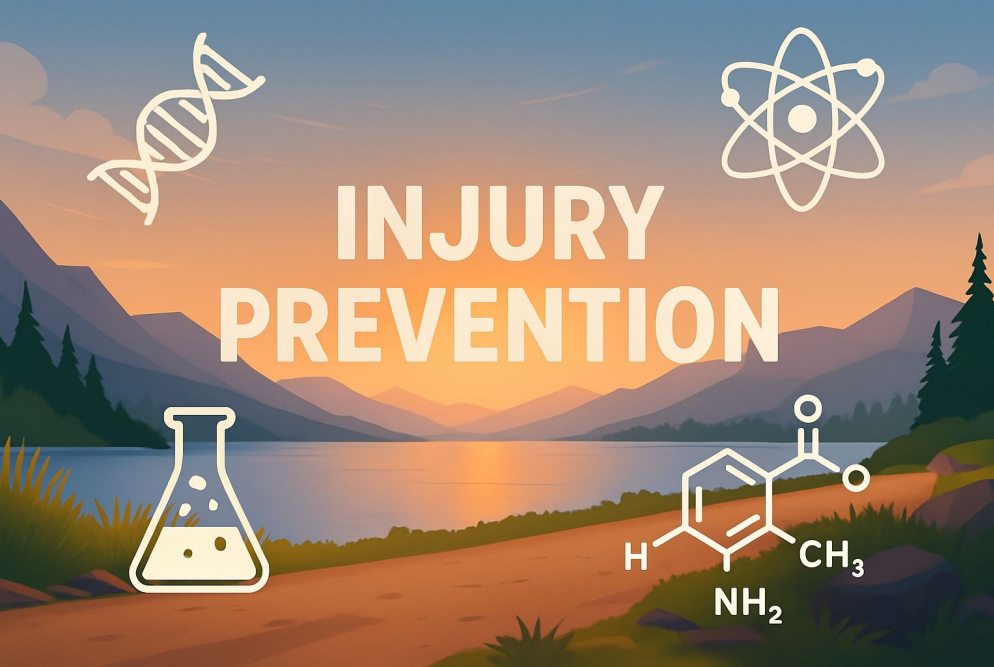Taking rest days is something I’ve found to be super important when sticking to a regular fitness routine or any active lifestyle. Pushing your body nonstop might seem like the way to boost results, but skipping rest days often leads to setbacks, nagging pain, or even full-blown injuries. I want to share my experience and what I’ve learned about why building in rest days is key for avoiding injuries and staying active long term.

Understanding The Role Of Rest Days In Injury Prevention
Every workout, whether it’s running, lifting weights, yoga, or playing team sports, puts stress on your muscles, joints, and tendons. Microtears in muscle fibers are a normal part of exercise. That’s actually how muscles get stronger: your body repairs these tiny tears, and the muscle adapts and grows.
If you don’t allow enough time for this recovery process, those tissues can’t rebuild fully. I’ve noticed this myself when I’ve tried to power through. Eventually, soreness lingers, energy tanks, and my risk of injury jumps. Overuse injuries like tendonitis, stress fractures, or pulled muscles often sneak in after long stretches without taking proper breaks.
Rest days let all those invisible repairs happen, balancing out the effort you put in during your workouts. The result is stronger, more resilient muscles, and a much lower chance of getting sidelined by overuse or fatigue-based injuries.
Types Of Rest Days: Active Vs. Passive Recovery
There’s no one-size-fits-all approach to taking a break. Here’s how I distinguish between active and passive rest days:
- Active Recovery: This is where you keep moving, but the focus is light activity. Think walking, easy cycling, stretching, or gentle yoga. It keeps your blood flowing and helps muscles loosen up without adding more stress.
- Passive Rest: Sometimes, you really need to do (almost) nothing. That could be a whole day just spent lounging, sleeping, or reading. I use this kind of rest if I’m feeling extra fatigued, sick, or recovering from hard training.
Mixing up the two has worked well for me. Sometimes a light walk is all I need, while after tough events or injuries, a full day off does wonders.
It’s worth mentioning that both forms have their place. If you’ve just finished a tough race or a particularly hard workout block, your body might require true, passive recovery. On the other hand, if you’re generally feeling fine but simply want to keep the streak alive, active recovery can scratch that itch without taxing the system. The magic lies in paying attention to what your body is truly asking for on any given day.
The Science Behind Rest And Injury Prevention
Researchers have looked at the link between rest days and injury rates, especially for athletes and regular exercisers. Most sports medicine guidelines recommend at least one day off each week, and more for people training at high intensity. According to the American Council on Exercise, rest helps lower inflammation and gives soft tissues time to rebuild, protecting you from chronic injuries that come from repetitive strain.
Real life shows the same trend. Anyone who’s had a stress fracture, tendonitis, or even a simple pulled muscle knows that these injuries usually pop up after long periods of hard effort with no break. Building in recovery time isn’t about slowing progress. It’s about making sure you can keep progressing over months and years, rather than hitting a wall and needing to start from scratch.
On a chemical level, exercise releases stress hormones like cortisol, which in moderate doses help with adaptation. But without rest, cortisol stays elevated, raising inflammation, interrupting sleep cycles, and impeding tissue repair. This is why chronic sleep deprivation and nonstop workouts often go hand in hand with illness or nagging pain. Scheduling rest lets all those hormonal and inflammatory signals cool down, setting the stage for better performance and fewer injuries in the long haul.
Common Mistakes People Make About Rest Days
- Thinking Rest Days Are A Waste: A lot of people, me included at one point, mistakenly think more workouts always equals better results. The reality is, progress stalls when you don’t recover.
- Skipping Rest Due To Guilt: Sometimes I’ve skipped breaks because I felt guilty or lazy. This almost always backfires, leading to poor sleep, crankiness, or a minor injury that forces an even longer break.
- Overdoing “Active” Recovery: It’s easy to turn an active rest day into another workout, which cancels out the benefit. Sticking with genuinely light activities helps keep recovery on track.
Another common mistake is comparing yourself endlessly to others. Just because someone online does not post about their rest days does not mean they are not taking them. Everyone’s body is different, so checking in with your own needs matters far more than trying to follow a popular influencer’s routine without context.
Another common reason for injuries is not only bad rest but also electrolytes. You have probably heard about them, but might wonder what they are. Well, you can find out everything about them and how to efficiently let them help you through your fitness journey. Make sure to check it out here.
Frequently Asked Questions
Here are some common questions I get about rest days and staying injury-free:
Do rest days prevent injury?
Yes, rest days play a big role in protecting against overuse injuries and giving muscles, bones, and tendons time to recover from microdamage. Skipping rest frequently leads to things like sprains, strains, or more serious injuries that could have been avoided.
Why is it important to have a day of rest?
A rest day balances out tough workouts, letting your body repair and adapt. It also restores mental energy, keeps motivation high, and reduces the risk of burning out or getting sick or injured.
Why is it important to rest when injured?
When you’re already dealing with an injury, rest is how your body focuses its efforts on healing. Pushing through pain often slows down recovery and can make things worse, leading to longer downtime overall.
How does rest prevent injury?
Rest prevents injury by giving tissues time to heal, reducing inflammation, and restoring energy systems. When your body is well rested, your movements are smoother, reaction times are faster, and your form is better, making you much less likely to get hurt.
How often should you take rest days?
Most experts suggest at least one or two rest days per week, depending on your activity level, age, and how hard you’re training. Listening to your body and adjusting as needed is always a good rule of thumb. For some, an extra rest day after a particularly intense workout can make all the difference in how the next week feels.
Putting It All Together: Rest Days For The Win
Giving yourself permission to rest is one of the smartest moves for staying healthy and active over the long run. Taking breaks makes it possible to train hard, make progress, and actually reach your goals instead of getting knocked off track by avoidable injuries. I’ve seen firsthand how weaving in rest days keeps me strong, feeling good, and eager for more. Resting up shouldn’t feel like a setback; it’s a smart investment in your future well-being! Remember, successful fitness is a marathon, not a sprint. Treat rest days as the backbone of a sustainable routine, and you’ll be set up for more active, pain-free years ahead.

Leave a Reply